Artist Profiles
Jacob Riis
Biography: Jacob Riis was born in Denmark in 1849, he was one of fifteen children in his family. At 21 years of age Riis immigrated to the United States and lived in a tenement in New York City on the Lower East Side, which were crammed, filthy and disease ridden. During the first couple years of Riis's life in the United States, he lived in poverty and did not have a solid consistant job until he began his journalism. Riis was first hired by the Long Island Newspaper, then the Brooklyn News, and the New York Tribune where he was city editor. Riis would use photography to demonstrate the horrible living conditions all over New York City and in particular the Lower East Side. Riis was one of the first to use flash photography allowing him the ability to photograph the worst parts of the New York City slums at night. Through his photography Riis was able to advocate for social reform in New York City.
Biography: Jacob Riis was born in Denmark in 1849, he was one of fifteen children in his family. At 21 years of age Riis immigrated to the United States and lived in a tenement in New York City on the Lower East Side, which were crammed, filthy and disease ridden. During the first couple years of Riis's life in the United States, he lived in poverty and did not have a solid consistant job until he began his journalism. Riis was first hired by the Long Island Newspaper, then the Brooklyn News, and the New York Tribune where he was city editor. Riis would use photography to demonstrate the horrible living conditions all over New York City and in particular the Lower East Side. Riis was one of the first to use flash photography allowing him the ability to photograph the worst parts of the New York City slums at night. Through his photography Riis was able to advocate for social reform in New York City.
Riis's Works
Both of these photos give a harsh insight to how the New York City slums were, through a depressing and dark mood from the photos. In these photos the subjects were people living in the slums to leave no doubt in the viewers mind that the situation in the slums was affecting real lives.
Louis Daguerre
Biography: A french photographer born in 1787 is recognized for the invention of the daguerreotype process of photography and is considered one of the fathers of photography. Being a very successful photographer, Daguerre was the first in the world to produce a heliograph and the worlds oldest surviving camera in 1826. In 1839 Daguerre went public with his invention of the daguerreotype process and it was so revolutionizing that the French Government promised pensions for Daguerre and his son in exchange for the rights to his self titled process. The French Government later released the process to the world as a "gift from France". Daguerre died in 1851 and Daguerre's name is inscribed in the Eiffel Tower, for his influence on the world of photography and his amazing accomplishments.
 Gertrude Kasbier Biography: One of the most influential American photographers of the 20th century. She paved the way for women in photography through her images of motherhood and portraits native americans. Born in Des Moines on May 18, 1852, Kasebier lived with her father until his death in 1864 and then moved to New York. At the age of 37 Kasebier started art school, supported financially by her husband. Her education took her all over the world and she was very determined to become a profesional photographer once she returned to New York. Kasebier took her passion for photograph and started taking portraits all over the country, establishing a respected name for herself.
Gertrude Kasbier Biography: One of the most influential American photographers of the 20th century. She paved the way for women in photography through her images of motherhood and portraits native americans. Born in Des Moines on May 18, 1852, Kasebier lived with her father until his death in 1864 and then moved to New York. At the age of 37 Kasebier started art school, supported financially by her husband. Her education took her all over the world and she was very determined to become a profesional photographer once she returned to New York. Kasebier took her passion for photograph and started taking portraits all over the country, establishing a respected name for herself.
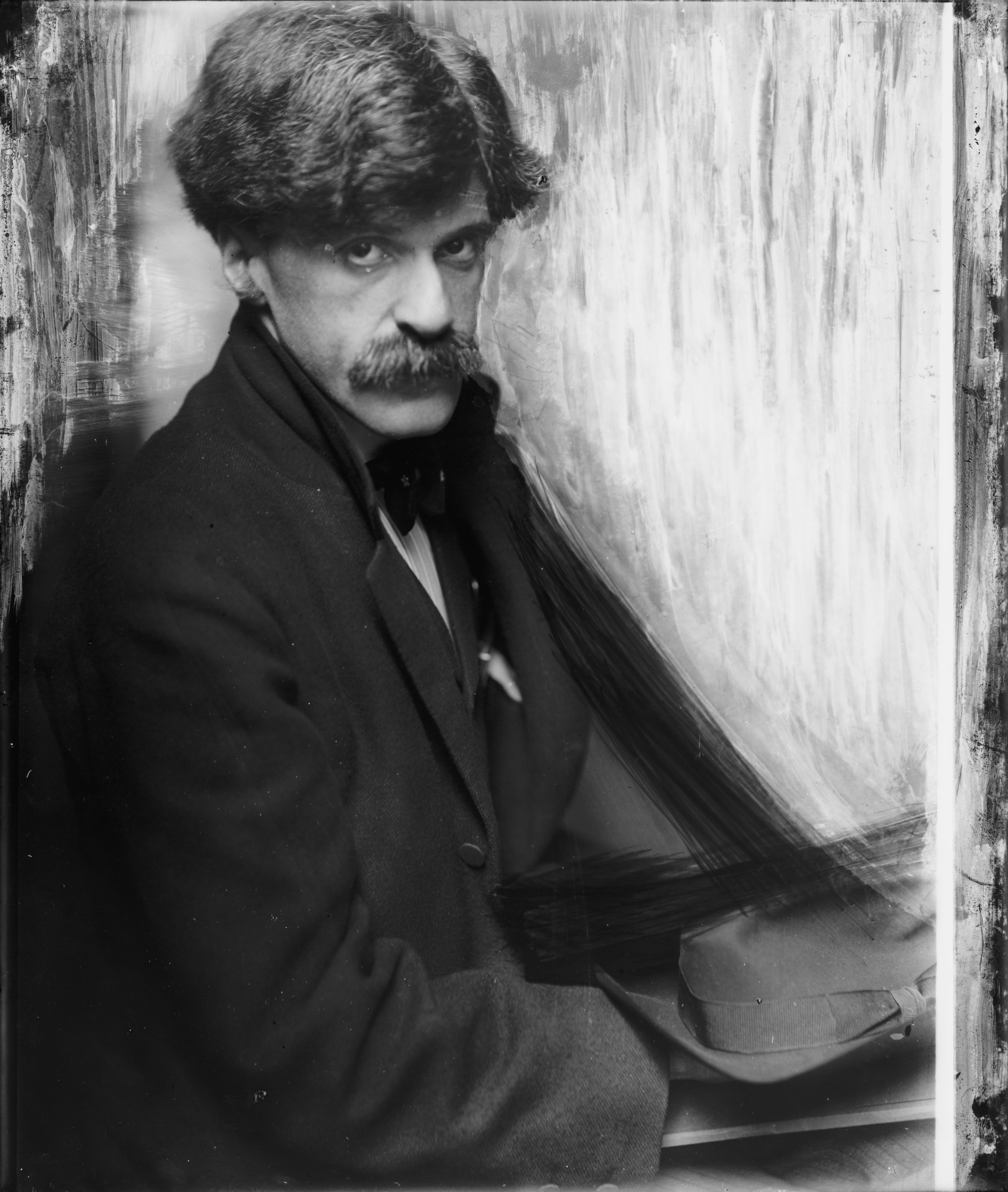 Alfred Stieglitz Biography: An American photographer who was instrumental in making photography an accepted art form during his 50 year career. Stieglitz ran New York art galleries and introduced many European artists to the United States. Born on January 1, 1864 in Hoboken, New Jersey he was one of five siblings in his family. Stieglitz moved from the United States to Germany and went to school in Germany. Stieglitz came back to the United States as a photographer, but refused to sell his works. He was very involved with making photography a recognized art from and worked with magazines to establish their position in the field of art. Later was a leader in a modern art movement and experimented using unusual techniques, like waxing and drawing on platinum prints. Stieglitz is proclaimed as "the most important figure in the history of visual arts in America".
Alfred Stieglitz Biography: An American photographer who was instrumental in making photography an accepted art form during his 50 year career. Stieglitz ran New York art galleries and introduced many European artists to the United States. Born on January 1, 1864 in Hoboken, New Jersey he was one of five siblings in his family. Stieglitz moved from the United States to Germany and went to school in Germany. Stieglitz came back to the United States as a photographer, but refused to sell his works. He was very involved with making photography a recognized art from and worked with magazines to establish their position in the field of art. Later was a leader in a modern art movement and experimented using unusual techniques, like waxing and drawing on platinum prints. Stieglitz is proclaimed as "the most important figure in the history of visual arts in America".
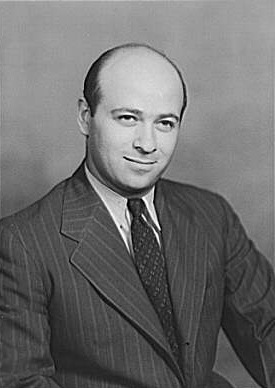 Jack Delano
Jack Delano
Biography: Delano was born as Jacob Ovcharov in the Russian Empire (now Vorošýlivka, Ukraine) and moved, with his parents and younger brother, to the United States in 1923. The family arrived at New York on July 5, 1923 on the boat SS Homeric. Between 1924 and 1932 he studied graphic arts/photography and music at the Settlement Music School, going on to study at the Pennsylvania Academy of the Fine Arts (PAFA). After graduating from PAFA Delano went on to work of the FSA and was a photographer until the program was closed. Delano lived out the rest of his life in Puerto Rico.
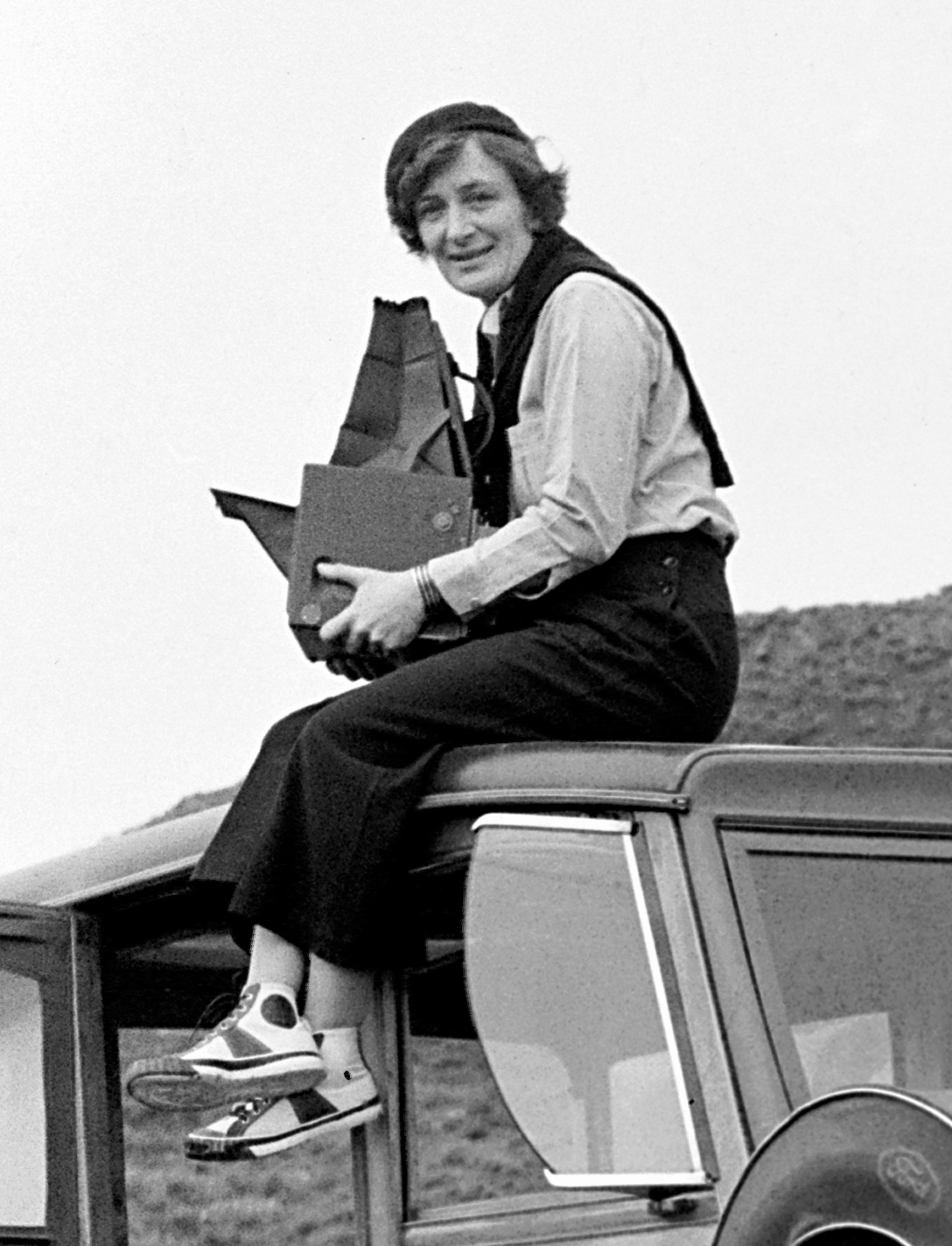 Dorothea Lange Biography: A documentary photographer and photo journalist best known for her Depression-era work for the Farm Security Administration (FSA). Born of second generation German immigrants on May 26, 1895, at 1041 Bloomfield Street, Hoboken, New Jersey to Heinrich Nutzhorn and Johanna Lange. Lange graduated from the Wadleigh High School for Girls and was educated in photography at Columbia University in New York City. Her studies of unemployed and homeless people, led to her employment with the Farm Security Administration (FSA). In 1941, Lange was awarded a Guggenheim Fellowship for achievement in photography. Although she gave up the prestigious award to cover the internment of Japanese Americans and their subsequent incarceration, traveling throughout urban and rural California, highlighting Manzanar, the first of the permanent internment camps. Her images were so obviously critical that the Army impounded most of them, and they were not seen publicly during the war. In 1945, Lange accepted a position as faculty at the first fine art photography department at the California School of Fine Arts (CSFA).
Dorothea Lange Biography: A documentary photographer and photo journalist best known for her Depression-era work for the Farm Security Administration (FSA). Born of second generation German immigrants on May 26, 1895, at 1041 Bloomfield Street, Hoboken, New Jersey to Heinrich Nutzhorn and Johanna Lange. Lange graduated from the Wadleigh High School for Girls and was educated in photography at Columbia University in New York City. Her studies of unemployed and homeless people, led to her employment with the Farm Security Administration (FSA). In 1941, Lange was awarded a Guggenheim Fellowship for achievement in photography. Although she gave up the prestigious award to cover the internment of Japanese Americans and their subsequent incarceration, traveling throughout urban and rural California, highlighting Manzanar, the first of the permanent internment camps. Her images were so obviously critical that the Army impounded most of them, and they were not seen publicly during the war. In 1945, Lange accepted a position as faculty at the first fine art photography department at the California School of Fine Arts (CSFA).
Biography: A french photographer born in 1787 is recognized for the invention of the daguerreotype process of photography and is considered one of the fathers of photography. Being a very successful photographer, Daguerre was the first in the world to produce a heliograph and the worlds oldest surviving camera in 1826. In 1839 Daguerre went public with his invention of the daguerreotype process and it was so revolutionizing that the French Government promised pensions for Daguerre and his son in exchange for the rights to his self titled process. The French Government later released the process to the world as a "gift from France". Daguerre died in 1851 and Daguerre's name is inscribed in the Eiffel Tower, for his influence on the world of photography and his amazing accomplishments.
Daguerre's works
Both of these pieces display Daguerreotype process because of how these are two very busy streets in France, but the long exposure needed for the thin sliver-plated copper sheet made it so the streets looked empty.
 Gertrude Kasbier Biography: One of the most influential American photographers of the 20th century. She paved the way for women in photography through her images of motherhood and portraits native americans. Born in Des Moines on May 18, 1852, Kasebier lived with her father until his death in 1864 and then moved to New York. At the age of 37 Kasebier started art school, supported financially by her husband. Her education took her all over the world and she was very determined to become a profesional photographer once she returned to New York. Kasebier took her passion for photograph and started taking portraits all over the country, establishing a respected name for herself.
Gertrude Kasbier Biography: One of the most influential American photographers of the 20th century. She paved the way for women in photography through her images of motherhood and portraits native americans. Born in Des Moines on May 18, 1852, Kasebier lived with her father until his death in 1864 and then moved to New York. At the age of 37 Kasebier started art school, supported financially by her husband. Her education took her all over the world and she was very determined to become a profesional photographer once she returned to New York. Kasebier took her passion for photograph and started taking portraits all over the country, establishing a respected name for herself.
Kasbier's works
These works show Kasebier's passion for portraits which was the majority of the photos that she took during her career. Kasebier took portraits of a wide range of subjects and went to many places around the United States to build her gallery. Kasbier was a pioneer for photography and more especially women photographers, for she was the first to show that women could have careers in the field.
 Alfred Stieglitz Biography: An American photographer who was instrumental in making photography an accepted art form during his 50 year career. Stieglitz ran New York art galleries and introduced many European artists to the United States. Born on January 1, 1864 in Hoboken, New Jersey he was one of five siblings in his family. Stieglitz moved from the United States to Germany and went to school in Germany. Stieglitz came back to the United States as a photographer, but refused to sell his works. He was very involved with making photography a recognized art from and worked with magazines to establish their position in the field of art. Later was a leader in a modern art movement and experimented using unusual techniques, like waxing and drawing on platinum prints. Stieglitz is proclaimed as "the most important figure in the history of visual arts in America".
Alfred Stieglitz Biography: An American photographer who was instrumental in making photography an accepted art form during his 50 year career. Stieglitz ran New York art galleries and introduced many European artists to the United States. Born on January 1, 1864 in Hoboken, New Jersey he was one of five siblings in his family. Stieglitz moved from the United States to Germany and went to school in Germany. Stieglitz came back to the United States as a photographer, but refused to sell his works. He was very involved with making photography a recognized art from and worked with magazines to establish their position in the field of art. Later was a leader in a modern art movement and experimented using unusual techniques, like waxing and drawing on platinum prints. Stieglitz is proclaimed as "the most important figure in the history of visual arts in America".
Stiegliz's works
These are one of Stieglitz most famous works taken on his first hand-held camera. Stieglitz used his own photography to make the claim that photography deserved a place as an art form. Stieglitz was using a plate film camera and was very influential to the art form, a pioneer of sorts.
Farm Security Administration: the Farm Security Administration (FSA) was an effort during the Depression to combat American rural poverty. The FSA is famous for its small but highly influential photography program, 1935–44, that portrayed the challenges of rural poverty.The Information Division of the FSA was responsible for providing educational materials and press information to the public. The FSA adopted a goal of "introducing America to Americans." Many of the most famous Depression-era photographers were fostered by the FSA project.
 Jack Delano
Jack Delano Biography: Delano was born as Jacob Ovcharov in the Russian Empire (now Vorošýlivka, Ukraine) and moved, with his parents and younger brother, to the United States in 1923. The family arrived at New York on July 5, 1923 on the boat SS Homeric. Between 1924 and 1932 he studied graphic arts/photography and music at the Settlement Music School, going on to study at the Pennsylvania Academy of the Fine Arts (PAFA). After graduating from PAFA Delano went on to work of the FSA and was a photographer until the program was closed. Delano lived out the rest of his life in Puerto Rico.
Delano's Works
"At the bus station" May 1940
"Chicago Union Station" January 1943
 Dorothea Lange Biography: A documentary photographer and photo journalist best known for her Depression-era work for the Farm Security Administration (FSA). Born of second generation German immigrants on May 26, 1895, at 1041 Bloomfield Street, Hoboken, New Jersey to Heinrich Nutzhorn and Johanna Lange. Lange graduated from the Wadleigh High School for Girls and was educated in photography at Columbia University in New York City. Her studies of unemployed and homeless people, led to her employment with the Farm Security Administration (FSA). In 1941, Lange was awarded a Guggenheim Fellowship for achievement in photography. Although she gave up the prestigious award to cover the internment of Japanese Americans and their subsequent incarceration, traveling throughout urban and rural California, highlighting Manzanar, the first of the permanent internment camps. Her images were so obviously critical that the Army impounded most of them, and they were not seen publicly during the war. In 1945, Lange accepted a position as faculty at the first fine art photography department at the California School of Fine Arts (CSFA).
Dorothea Lange Biography: A documentary photographer and photo journalist best known for her Depression-era work for the Farm Security Administration (FSA). Born of second generation German immigrants on May 26, 1895, at 1041 Bloomfield Street, Hoboken, New Jersey to Heinrich Nutzhorn and Johanna Lange. Lange graduated from the Wadleigh High School for Girls and was educated in photography at Columbia University in New York City. Her studies of unemployed and homeless people, led to her employment with the Farm Security Administration (FSA). In 1941, Lange was awarded a Guggenheim Fellowship for achievement in photography. Although she gave up the prestigious award to cover the internment of Japanese Americans and their subsequent incarceration, traveling throughout urban and rural California, highlighting Manzanar, the first of the permanent internment camps. Her images were so obviously critical that the Army impounded most of them, and they were not seen publicly during the war. In 1945, Lange accepted a position as faculty at the first fine art photography department at the California School of Fine Arts (CSFA).
Lange's Works
Children at the Weill Public School in April 1942
"Migrant Mother" March 1936
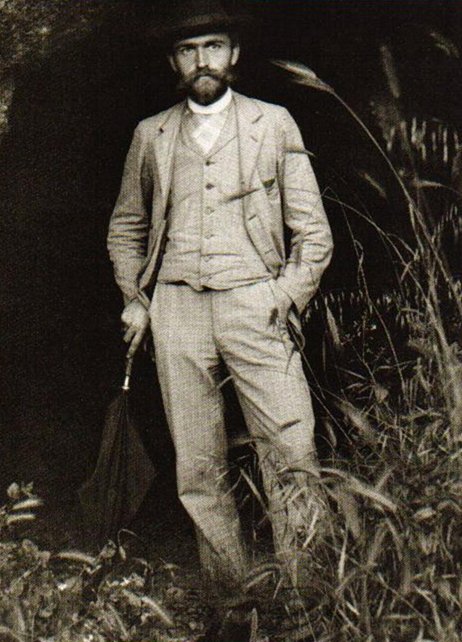 Karl Blossfeldt Biography: A German photographer, sculptor, teacher, and artist who worked in Berlin, Germany. He is best known for his close-up photographs of plants and living things, published in 1929 as, Urformen der Kunst. He was inspired, as was his father, by nature and the ways in which plants grow. He believed that 'the plant must be valued as a totally artistic and architectural structure.' Blossfeldt's photography highlighted abstract shapes and structures found in nature. His style and the contributions that he made to photography influenced many, with his work being very influential. One of Blossfeldt's books was even deemed as one of the most seminal photographic books of the 20th century.
Karl Blossfeldt Biography: A German photographer, sculptor, teacher, and artist who worked in Berlin, Germany. He is best known for his close-up photographs of plants and living things, published in 1929 as, Urformen der Kunst. He was inspired, as was his father, by nature and the ways in which plants grow. He believed that 'the plant must be valued as a totally artistic and architectural structure.' Blossfeldt's photography highlighted abstract shapes and structures found in nature. His style and the contributions that he made to photography influenced many, with his work being very influential. One of Blossfeldt's books was even deemed as one of the most seminal photographic books of the 20th century.
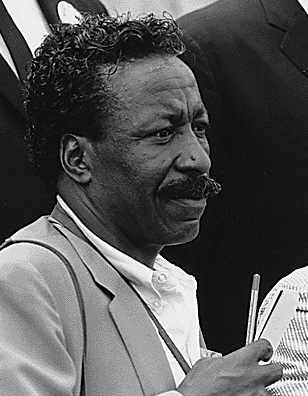 Gordon Parks Biography: An American photographer working in U.S. documentary journalism throughout the 1940s to the 1970s, focusing mainly on civil rights, poverty, and African Americans. As the first famous pioneer among black filmmakers, he was the first African American to produce and direct major motion pictures—developing films relating the experience of slaves and struggling black Americans, and creating the "blaxploitation" genre. He is best remembered for his iconic photos of poor Americans during the 1940s (taken for a federal government project), for his photographic essays for Life magazine, and as the director of the 1971 film Shaft. Parks also was an author, poet and composer. In his 20 years at Life magazine, Parks produced photographs on subjects including fashion, sports, Broadway, poverty, and racial segregation, as well as portraits of Malcolm X, Stokely Carmichael, Muhammad Ali, and Barbra Streisand.
Gordon Parks Biography: An American photographer working in U.S. documentary journalism throughout the 1940s to the 1970s, focusing mainly on civil rights, poverty, and African Americans. As the first famous pioneer among black filmmakers, he was the first African American to produce and direct major motion pictures—developing films relating the experience of slaves and struggling black Americans, and creating the "blaxploitation" genre. He is best remembered for his iconic photos of poor Americans during the 1940s (taken for a federal government project), for his photographic essays for Life magazine, and as the director of the 1971 film Shaft. Parks also was an author, poet and composer. In his 20 years at Life magazine, Parks produced photographs on subjects including fashion, sports, Broadway, poverty, and racial segregation, as well as portraits of Malcolm X, Stokely Carmichael, Muhammad Ali, and Barbra Streisand.
 Karl Blossfeldt Biography: A German photographer, sculptor, teacher, and artist who worked in Berlin, Germany. He is best known for his close-up photographs of plants and living things, published in 1929 as, Urformen der Kunst. He was inspired, as was his father, by nature and the ways in which plants grow. He believed that 'the plant must be valued as a totally artistic and architectural structure.' Blossfeldt's photography highlighted abstract shapes and structures found in nature. His style and the contributions that he made to photography influenced many, with his work being very influential. One of Blossfeldt's books was even deemed as one of the most seminal photographic books of the 20th century.
Karl Blossfeldt Biography: A German photographer, sculptor, teacher, and artist who worked in Berlin, Germany. He is best known for his close-up photographs of plants and living things, published in 1929 as, Urformen der Kunst. He was inspired, as was his father, by nature and the ways in which plants grow. He believed that 'the plant must be valued as a totally artistic and architectural structure.' Blossfeldt's photography highlighted abstract shapes and structures found in nature. His style and the contributions that he made to photography influenced many, with his work being very influential. One of Blossfeldt's books was even deemed as one of the most seminal photographic books of the 20th century.
Blossfeldt's Works
These photos from Blossfeldt demonstrate the way in which he view these plants as something so architecturally beautiful. Through the simple and contrasting photos these plants are shown in a new perspective allowing for the viewer to enjoy something everyone has seen before in a new way.
 Gordon Parks Biography: An American photographer working in U.S. documentary journalism throughout the 1940s to the 1970s, focusing mainly on civil rights, poverty, and African Americans. As the first famous pioneer among black filmmakers, he was the first African American to produce and direct major motion pictures—developing films relating the experience of slaves and struggling black Americans, and creating the "blaxploitation" genre. He is best remembered for his iconic photos of poor Americans during the 1940s (taken for a federal government project), for his photographic essays for Life magazine, and as the director of the 1971 film Shaft. Parks also was an author, poet and composer. In his 20 years at Life magazine, Parks produced photographs on subjects including fashion, sports, Broadway, poverty, and racial segregation, as well as portraits of Malcolm X, Stokely Carmichael, Muhammad Ali, and Barbra Streisand.
Gordon Parks Biography: An American photographer working in U.S. documentary journalism throughout the 1940s to the 1970s, focusing mainly on civil rights, poverty, and African Americans. As the first famous pioneer among black filmmakers, he was the first African American to produce and direct major motion pictures—developing films relating the experience of slaves and struggling black Americans, and creating the "blaxploitation" genre. He is best remembered for his iconic photos of poor Americans during the 1940s (taken for a federal government project), for his photographic essays for Life magazine, and as the director of the 1971 film Shaft. Parks also was an author, poet and composer. In his 20 years at Life magazine, Parks produced photographs on subjects including fashion, sports, Broadway, poverty, and racial segregation, as well as portraits of Malcolm X, Stokely Carmichael, Muhammad Ali, and Barbra Streisand.
Park's Works
American Gothic, Washington, D.C.
Biography: A 20th century American photographer who over his 40-year career photographed a variety of subjects, including landscapes, still lifes, nudes, portraits, genre scenes and even whimsical parodies. It is said that he developed a "quintessentially American, and specially Californian, approach to modern photography"because of his focus on the people and places of the American West. In 1937 Weston was the first photographer to receive a Guggenheim Fellowship, and over the next two years he produced nearly 1,400 negatives using his 8 × 10 view camera. Some of his most famous photographs were taken of the trees and rocks at Point Lobos, California, near where he lived for many years. In 1947 he was diagnosed with Parkinson's disease and he stopped photographing soon thereafter. He spent the remaining ten years of his life overseeing the printing of more than 1,000 of his most famous images.
Weston's Work's
Mary Ellen Mark
Biography: An American photo journalist who photographed people who were away from mainstream society and on the troubled fringes which were more interesting. Mark had 18 collections of her work published, most notably Streetwise and Ward 81. Her work was exhibited at galleries and museums worldwide and widely published in Life, Rolling Stone, The New Yorker, New York Times, and Vanity Fair. She was a member of Magnum Photos between 1977 and 1981. She received numerous accolades, including three Robert F. Kennedy Journalism Awards, three fellowships from the National Endowment for the Arts, the 2014 Lifetime Achievement in Photography Award from the George Eastman House and the Outstanding Contribution Photography Award from the World Photography Organisation.
Biography: An American photo journalist who photographed people who were away from mainstream society and on the troubled fringes which were more interesting. Mark had 18 collections of her work published, most notably Streetwise and Ward 81. Her work was exhibited at galleries and museums worldwide and widely published in Life, Rolling Stone, The New Yorker, New York Times, and Vanity Fair. She was a member of Magnum Photos between 1977 and 1981. She received numerous accolades, including three Robert F. Kennedy Journalism Awards, three fellowships from the National Endowment for the Arts, the 2014 Lifetime Achievement in Photography Award from the George Eastman House and the Outstanding Contribution Photography Award from the World Photography Organisation.
Mark's Work's
In this last photo, a little girl is smoking a cigarette while standing in a kiddie pool. The girl is standing like a smoker with her right arm crossed over her body while her left arm resting upwards with the cigarette between her fingers. The girl is emotionless with a blank stare and pursed lips pushing the smoke out of her mouth. There is also another girl, around the same age as the one smoking, sitting in the pool. Her expression is a clueless one, with her eyes looking into the camera and a slight frown on her face. This photo looks like it was taken at someones house in their backyard. The photo is a personal view into these children's lives, showing a reality that many wouldn't consider to be their own. I feel that this photo is trying to show the two sides of childhood; the smoking girl represents being brave and fearless, willing to go out and try new things while the girl sitting in the kiddie pool represents a child's innocence and being naive. This photo shows me another side of childhood that I have never experienced before, one that shows what the reality is for many children who live in poverty.
 Edward Burtynsky Bibliography: a Canadian photographer and artist known for his large format photographs of industrial landscapes. His work is housed in more than 50 museums including the Guggenheim Museum, the National Gallery of Canada, and the Bibliothèque Nationale, Paris. Burtynsky's most famous photographs are sweeping views of landscapes altered by industry: mine tailings, quarries, scrap piles. The grand, awe-inspiring beauty of his images is often in tension with the compromised environments they depict. He has made several excursions to China to photograph that country's industrial emergence, and construction of one of the world's largest engineering projects, the Three Gorges Dam.
Edward Burtynsky Bibliography: a Canadian photographer and artist known for his large format photographs of industrial landscapes. His work is housed in more than 50 museums including the Guggenheim Museum, the National Gallery of Canada, and the Bibliothèque Nationale, Paris. Burtynsky's most famous photographs are sweeping views of landscapes altered by industry: mine tailings, quarries, scrap piles. The grand, awe-inspiring beauty of his images is often in tension with the compromised environments they depict. He has made several excursions to China to photograph that country's industrial emergence, and construction of one of the world's largest engineering projects, the Three Gorges Dam.
Fazal Sheikh
Bibliography: An artist who uses photographs to document people living in displaced and marginalized communities around the world. His principle medium is the portrait, although his work also encompasses personal narratives, found photographs, archival material, sound, and his own written texts. He works from the conviction that a portrait is, as far as possible, an act of mutual engagement, and only through a long-term commitment to a place and to a community can a meaningful series of photographs be made. Sheikh was born in New York City, 1965, and attended Princeton University, graduating in 1987. Sheikh’s work first came to prominence with his work in the Rwandan, Sudanese, Ethiopian, Somali, and Mozambican refugee camps of his father’s homeland, Kenya, and throughout eastern and southern Africa. The exhibit showed an array of photos from Northern Africa, Middle East, and India showing conditions through portraits and different shots of the landscape and life in these areas.
Sheikh Work's
I did my guided meditation on this last photo which looked across the borderlands to Somalia from a water tower in Liboi, Kenya. When I took the time to look at all the parts of the photo I started to notice more specific aspects of the piece. Through the meditation I gained more appreciation for the panorama technique and how it showed the magnitude of this refugee camp. I noticed the way that the lines of the photos came together and connected so perfectly was satisfying to look at. I noticed the way that the film showed a slow shutter speed with the blur of the people walking and carts being pulled. This exercise calmed me and I was able to direct all of my focus on just on piece of art, everything else became a blur.
Barbara Crane
Bibliography: an American artist photographer born in Chicago, IL. Crane works with a variety of materials including Polaroid, gelatin silver, and platinum prints among others. She is known for her experimental and innovative work that challenges the straight photograph by incorporating sequencing, layered negatives, and repeated frames. Crane pioneered the use of repetition to convey the mechanical character of much of contemporary life, even in its recreational aspects.
I was drawn to the way the Crane used repetition throughout her photos and the effect that it give the viewer. The photos are also of everyday subjects and the symmetry of the works is aesthetically pleasing. I like the simplicity that these works show and how specific to one subject or idea they are. I also found the way that some of the photos were flipped gave the works another aspect that made them more interesting. I want to use the idea of keeping a constant throughout my series of photos while having something that is different in each piece of the work.
 Edward Burtynsky Bibliography: a Canadian photographer and artist known for his large format photographs of industrial landscapes. His work is housed in more than 50 museums including the Guggenheim Museum, the National Gallery of Canada, and the Bibliothèque Nationale, Paris. Burtynsky's most famous photographs are sweeping views of landscapes altered by industry: mine tailings, quarries, scrap piles. The grand, awe-inspiring beauty of his images is often in tension with the compromised environments they depict. He has made several excursions to China to photograph that country's industrial emergence, and construction of one of the world's largest engineering projects, the Three Gorges Dam.
Edward Burtynsky Bibliography: a Canadian photographer and artist known for his large format photographs of industrial landscapes. His work is housed in more than 50 museums including the Guggenheim Museum, the National Gallery of Canada, and the Bibliothèque Nationale, Paris. Burtynsky's most famous photographs are sweeping views of landscapes altered by industry: mine tailings, quarries, scrap piles. The grand, awe-inspiring beauty of his images is often in tension with the compromised environments they depict. He has made several excursions to China to photograph that country's industrial emergence, and construction of one of the world's largest engineering projects, the Three Gorges Dam.
Burtynsky's Work
These works show mass industrialization in the world in such an awe inspiring way. The magnitude of that these works show the impact of these roads, cities, and factories have on the world and the environment that they are in. Also the images have more of a birds eye view looking down upon the subject, showing the vastness.
Alex Webb
Bibliography: A photographer known for his vibrant and complex color photographs. He has been a member of Magnum Photos since 1979. He has exhibited at museums worldwide, including the Whitney Museum of Art, NYC, the Metropolitan Museum, NYC, and the High Museum of Art in Atlanta, Georgia. He was awarded a Guggenheim Fellowship in 2007. He has contributed to Geo, Time, National Geographic, and The New York Times Magazine among others.
Webb's Work
I like how these works are centered around color but the way in which the color is shown is different between them. In the first photo the light blue color is clearly shown from the shirt of the little boy to the building and the spinning ball all with the same theme. In the second photo color is more subtle, the light and the shadows expose the shirts of the women sitting all wearing different colored shirts. color is a focus in Webb's works with vibrant colors being present in many of his works such as these.



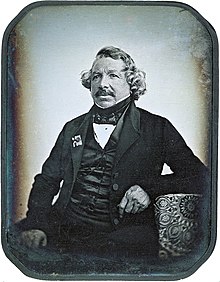








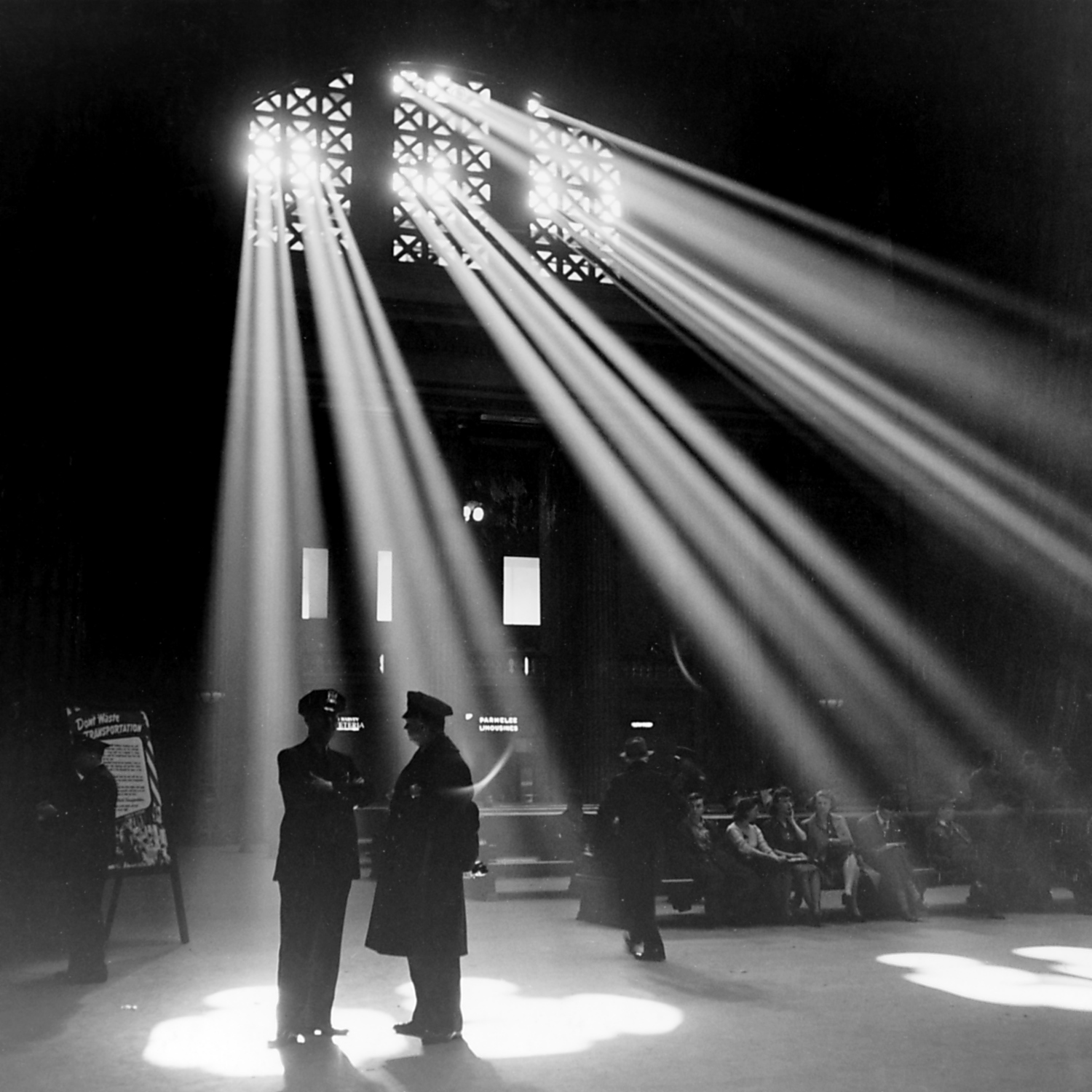




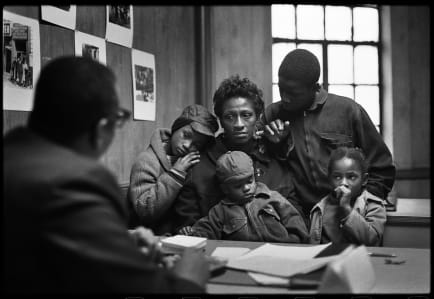
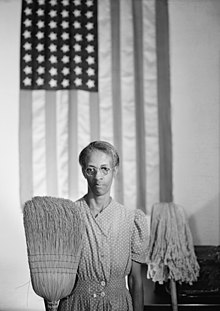




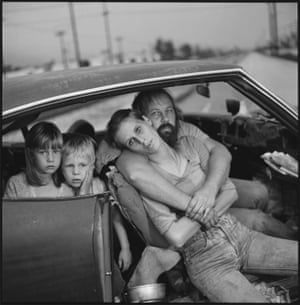
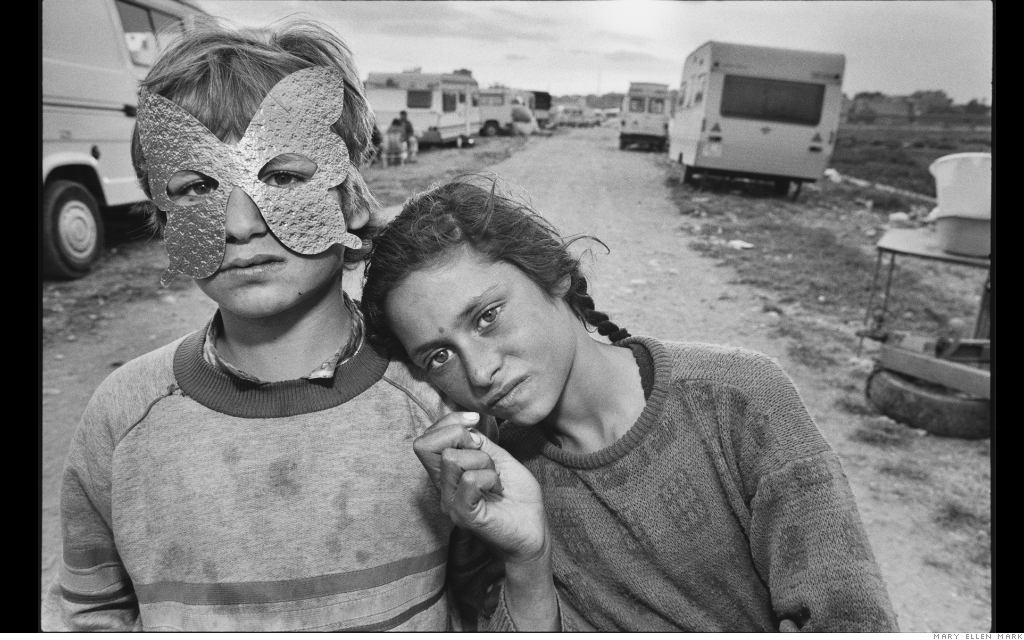




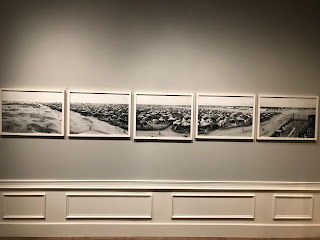
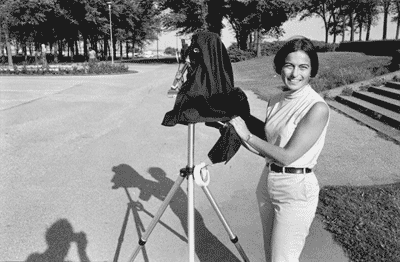








Comments
Post a Comment